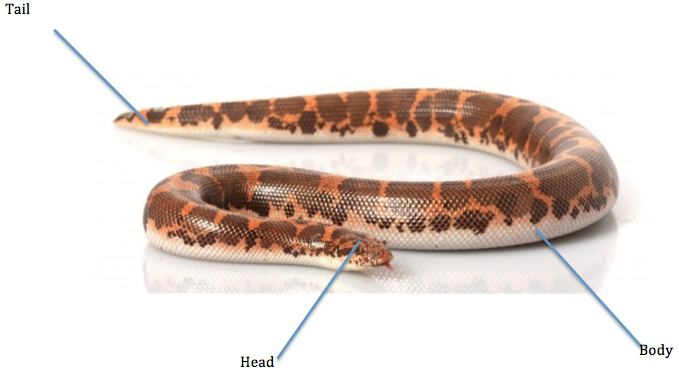1. They are multicellular.
2. They are heterotrophs.
3. They do not have cell walls.
Animals are most similar to plants because they are multicellular. However, Animals do not have cell walls like plants or fungus. Animals are the only Kingdom that does not reproduce asexualy and are never autotrophs.
[23]
Organism 1: Western Honey Bee
Kingdom:Animalia
Phylum; Arthropoda
Class: Insecta
Order: Hymenoptera
Family: Apidae
Genus: Apis
Species- mellifera

Figure 28: Honey bee diagram

Figure 21: Western Honey Bee (Apis mellifera)
The western honey bee is the most common type of honey bee worldwide. It can be found on every continent except for Antarctica. Western honey bees are a colonial species, meaning that they live together in hives as a colony. In a hive, there is a single queen bee who is responsible for laying eggs and producing offspring [34]. The rest of the hive is composed of female worker bees who collect nectar and protect the hive, as well as male drones, who are responsible for mating with the queen. Female workers compose roughly 90% of the hive.
The average western honey bee is 5 to 15 mm in length [34]. Just like all insects, the honey bee has 3 main parts, the head, the thorax, and the abdomen, which contains the stinger. They have alternating yellow and black stripes [34]. They have 6 legs and 2 pairs of wings, 4 in total. The western honey bee produces honey, as implied by the name, and this honey is often times used by humans as a food source.
Why does it belong here?
Animals have several characteristics that set them apart from other organisms. They are multicellular and eukaryotic, and they are heterotrophic. They also lack cell walls. The western honey bee possesses all of these traits, making it an animal. It belongs in the phylum Arthropoda because it is an invertebrate that has an exoskeleton, a segmented body, and jointed appendages.
Organsim 2: Sea wasp
Kingdom- Animalia
Phylum- Cnidaria
Class- Cubozoa
Order- Chirodropida
Family- Chirodropidae
Genus- Chironex
Species- Fleckeri

Figure 19: Chironex fleckeri

Figure 29: Box jellyfish diagram
The Chironex fleckeri, commonly referred to as the sea wasp, is one of the most deadly jellyfish in the world, with 64 known deaths in Australia between 1884 and 1996. It is the largest species of box jellyfish, with its bell growing to be about the size of a basketball [35]. It has 60 tentacles in total, 15 of which are on each corner. When the sea wasp is swimming, it contracts its tentacles to about 15 cm long. When it is hunting, the tentacles become thinner and grow to about 3 meters in length [35]. The jellyfish is nearly transparent, which is one of the factors that make it so dangerous to humans. These jellyfish like to eat small fish, as well as prawns. It has been hypothesized that the amount of venom in a single sea wasp is enough to kill 60 full grown humans [35].
Why does it belong here?
Like all animals, the sea wasp is multicellular and eukaryotic, as well as heterotrophic. Their cells do not have cell walls. The sea wasp is found in the Cnidaria phylum, which consists of over 10 thousand aquatic animals. They belong here because they have cnidocytes, microscopic cells that eject venom during hunting. Any animal that has cnidocytes belongs to this phylum.
Chironex fleckeri quiz- Natan and Noah
Organism 3: Kenyan Sand Boa
Kingdom- Animalia
Phylum- Chordata
Class- reptilia
Order- Squamata
Family- Boidae
Genus- Gongylophis
Species- colubrinus

Figure 30: Kenyan Sand Boa
The Kenyan sand boa is one of the more common snakes that are bred in captivity. The Kenyan sand boa is a relatively small snake, with females reaching little more than 2 feet in length, and males reaching up to 20 inches [36]. They are carnivores, and they eat rodents, especially mice. They are generally yellow or orange colored with brown splotches. For a snake, the Kenyan sand boa has relatively small eyes and a small tongue. These snakes are not venomous, and they kill their prey using constriction, like other boas. They are constrictors, meaning that they squeeze their food to death before eating it [36].
Why does it belong here?
The Kenyan sand boa is an animal because they are multicellular and eukaryotic, and they are heterotrophic. They also lack cell walls. They belong to the phylum Chordate because they have a notochord, a hollow dorsal nerve cord, pharyngeal slits, an endostyle, and a post-anal tail, for at least some period of their life cycle [37].